About This E-Book
Vulkan™ Programming Guide
Contents
Figures
Tables
Listings
About This Book
About the Sample Code
Errata
Acknowledgments
About the Author
Chapter 1. Overview of Vulkan
Introduction
Instances, Devices, and Queues
The Vulkan Instance
Vulkan Physical Devices
Physical Device Memory
Device Queues
Creating a Logical Device
Object Types and Function Conventions
Managing Memory
Multithreading in Vulkan
Mathematical Concepts
Vectors and Matrices
Coordinate Systems
Enhancing Vulkan
Layers
Extensions
Shutting Down Cleanly
Summary
Chapter 2. Memory and Resources
Host Memory Management
Resources
Buffers
Formats and Support
Images
Linear Images
Nonlinear Encoding
Compressed Image Formats
Resource Views
Buffer Views
Image Views
Image Arrays
Destroying Resources
Device Memory Management
Allocating Device Memory
Host Access to Device Memory
Binding Memory to Resources
Sparse Resources
Summary
Chapter 3. Queues and Commands
Device Queues
Creating Command Buffers
Recording Commands
Recycling Command Buffers
Submission of Commands
Summary
Chapter 4. Moving Data
Managing Resource State
Pipeline Barriers
Global Memory Barriers
Buffer Memory Barriers
Image Memory Barriers
Clearing and Filling Buffers
Clearing and Filling Images
Copying Image Data
Copying Compressed Image Data
Stretching Images
Summary
Chapter 5. Presentation
Presentation Extension
Presentation Surfaces
Presentation on Microsoft Windows
Presentation on Xlib-Based Platforms
Presentation with Xcb
Swap Chains
Full-Screen Surfaces
Performing Presentation
Cleaning Up
Summary
Chapter 6. Shaders and Pipelines
An Overview of GLSL
An Overview of SPIR-V
Representation of SPIR-V
Handing SPIR-V to Vulkan
Pipelines
Compute Pipelines
Creating Pipelines
Specialization Constants
Accelerating Pipeline Creation
Binding Pipelines
Executing Work
Resource Access in Shaders
Descriptor Sets
Binding Resources to Descriptor Sets
Binding Descriptor Sets
Uniform, Texel, and Storage Buffers
Unform and Shader Storage Blocks
Texel Buffers
Push Constants
Sampled Images
Image Filtering
Mipmapping
Summary
Chapter 7. Graphics Pipelines
The Logical Graphics Pipeline
Renderpasses
The Framebuffer
Creating a Simple Graphics Pipeline
Graphics Shader Stages
Vertex Input State
Input Assembly
Tessellation State
Viewport State
Rasterization State
Multisample State
Depth and Stencil State
Color Blend State
Dynamic State
Summary
Chapter 8. Drawing
Getting Ready to Draw
Vertex Data
Indexed Draws
Index-Only Rendering
Reset Indices
Instancing
Indirect Draws
Summary
Chapter 9. Geometry Processing
Tessellation
Tessellation Configuration
Tessellation Modes
Controlling Subdivision
Tessellation Variables
Patch Variables
Tessellation Evaluation Shaders
Tessellation Example: Displacement Mapping
Geometry Shaders
Cutting Primitives
Geometry Shader Instancing
Programmable Point Size
Line Width and Rasterization
User Clipping and Culling
The Viewport Transformation
Summary
Chapter 10. Fragment Processing
Scissor Testing
Depth and Stencil Operations
Depth Testing
Depth-Bounds Testing
Depth Bias
Stencil Testing
Early Fragment Tests
Multisample Rendering
Sample Rate Shading
Multisample Resolves
Logic Operations
Fragment Shader Outputs
Color Blending
Summary
Chapter 11. Synchronization
Fences
Events
Semaphores
Summary
Chapter 12. Getting Data Back
Queries
Executing Queries
Occlusion Queries
Pipeline Statistics Queries
Timing Queries
Reading Data with the Host
Summary
Chapter 13. Multipass Rendering
Input Attachments
Attachment Contents
Attachment Initialization
Render Areas
Preserving Attachment Content
Secondary Command Buffers
Summary
Appendix. Vulkan Functions
Glossary
Index
Code Snippets
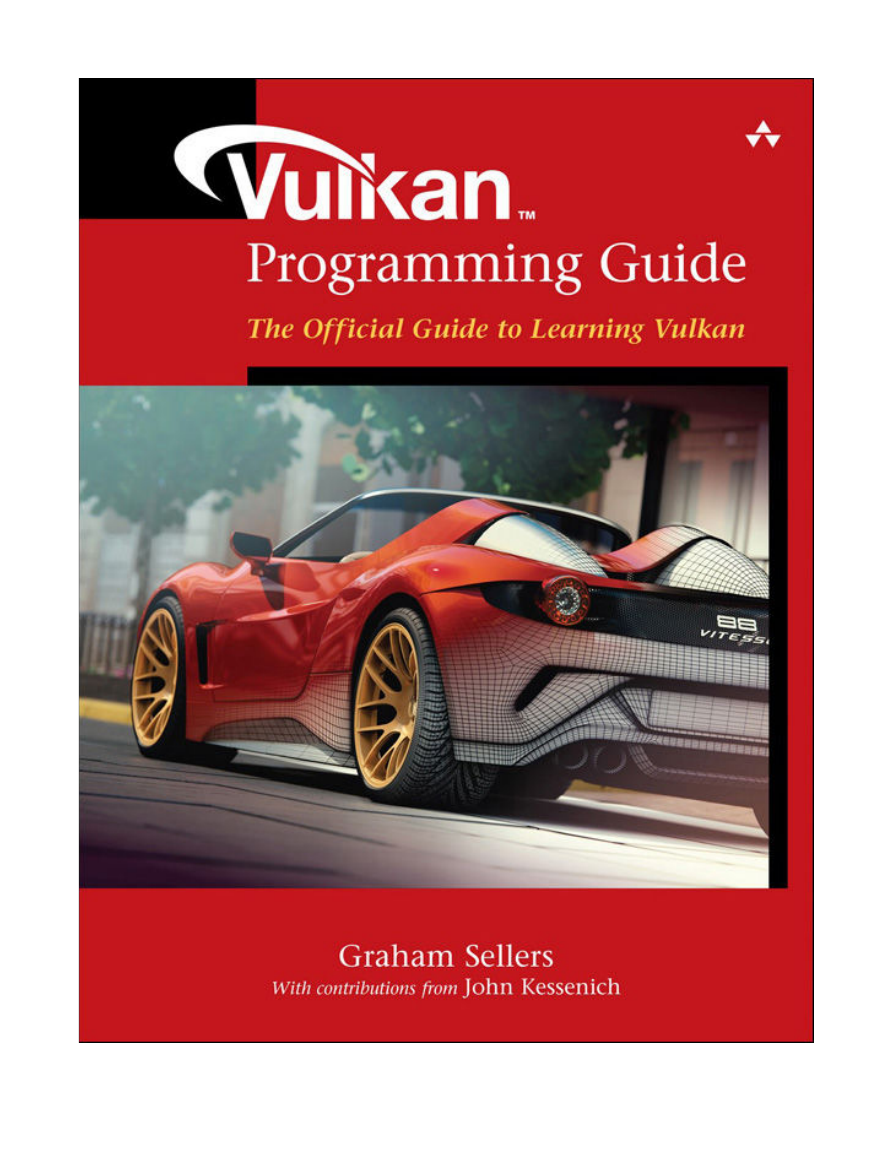
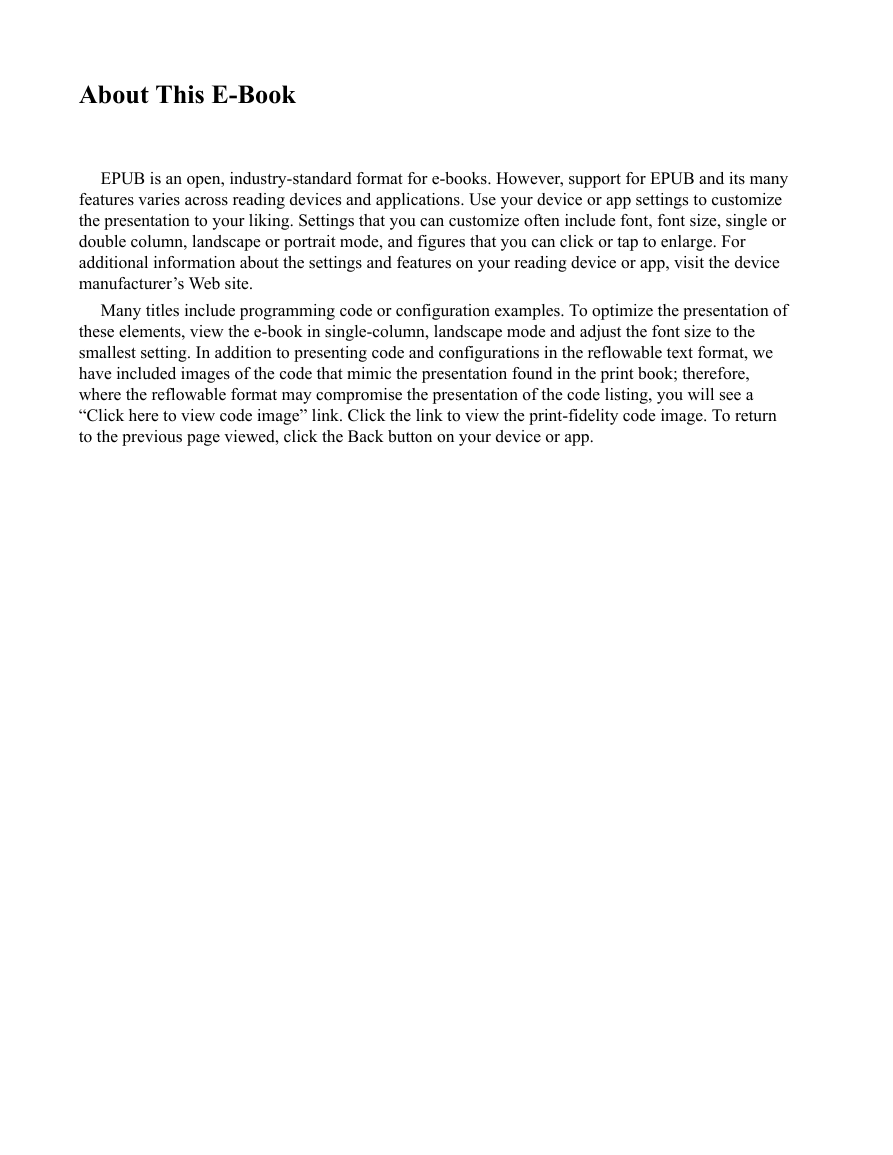
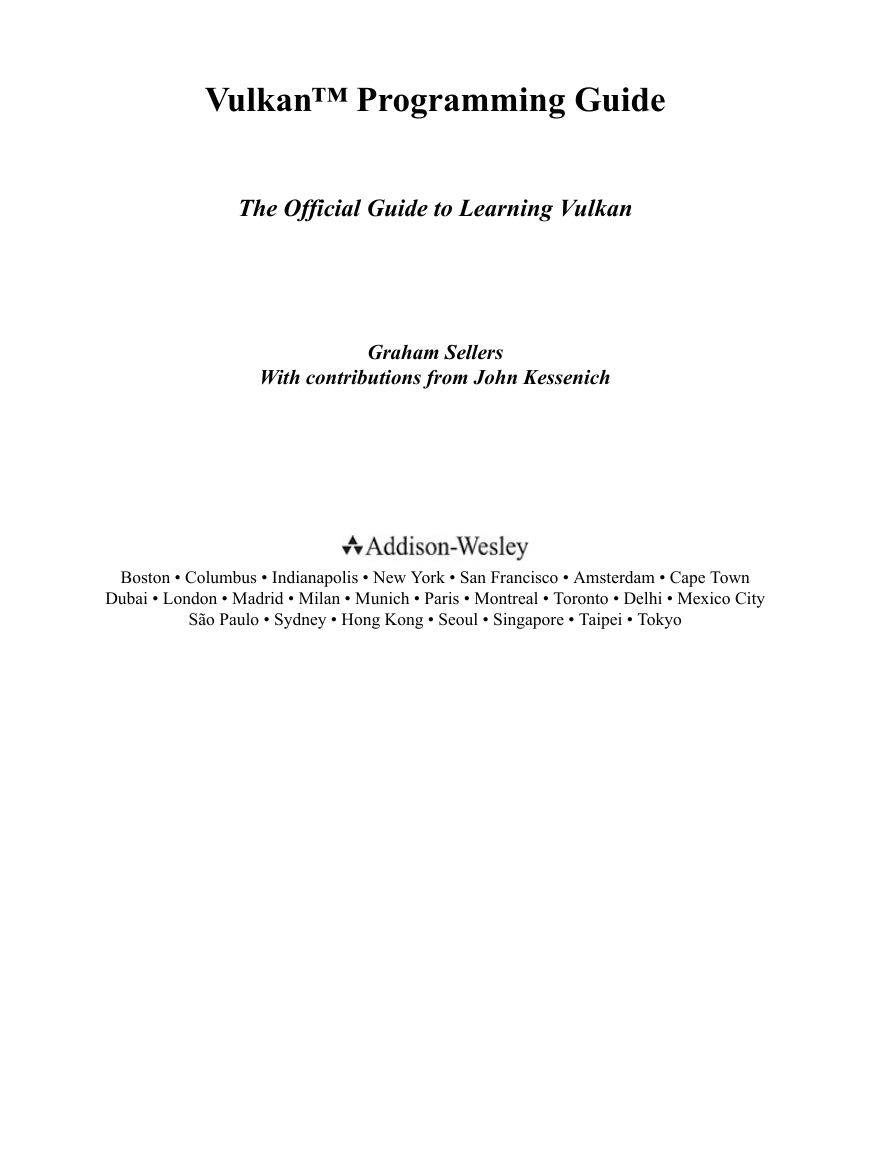
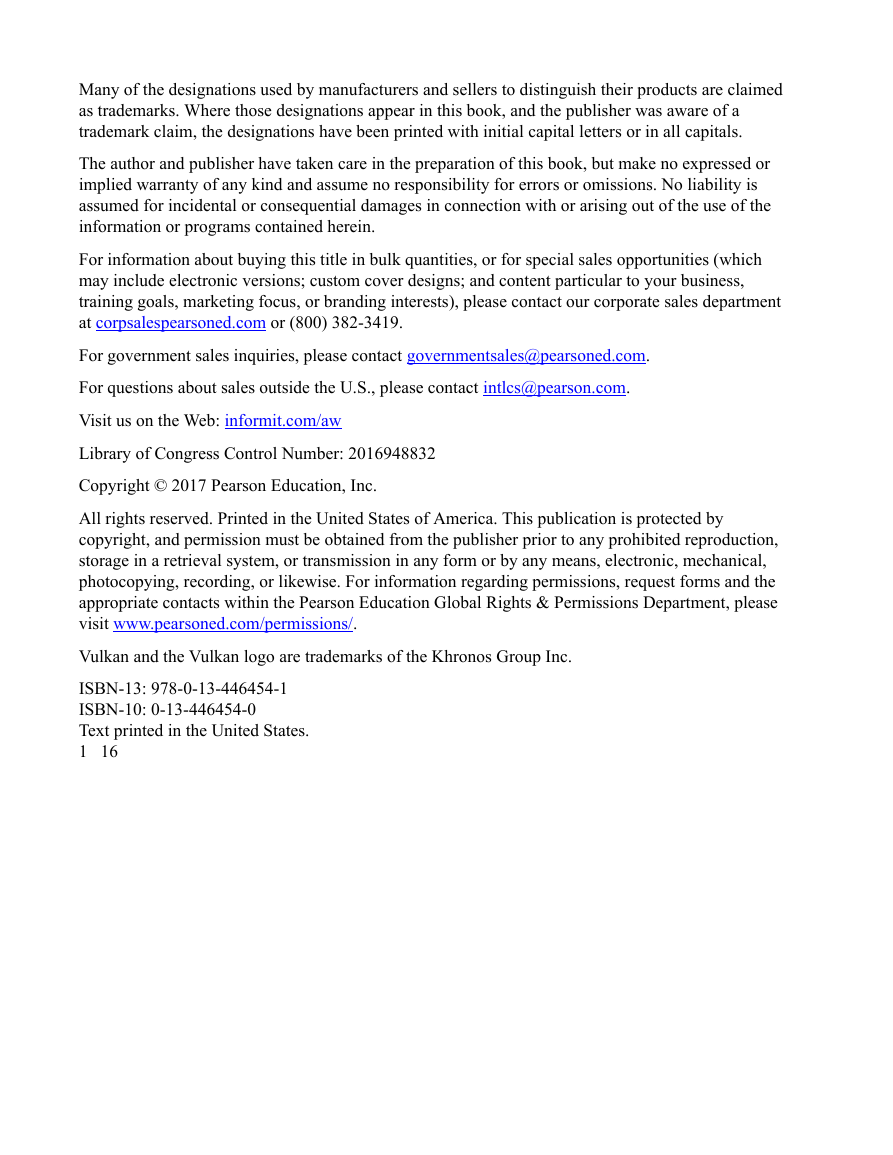
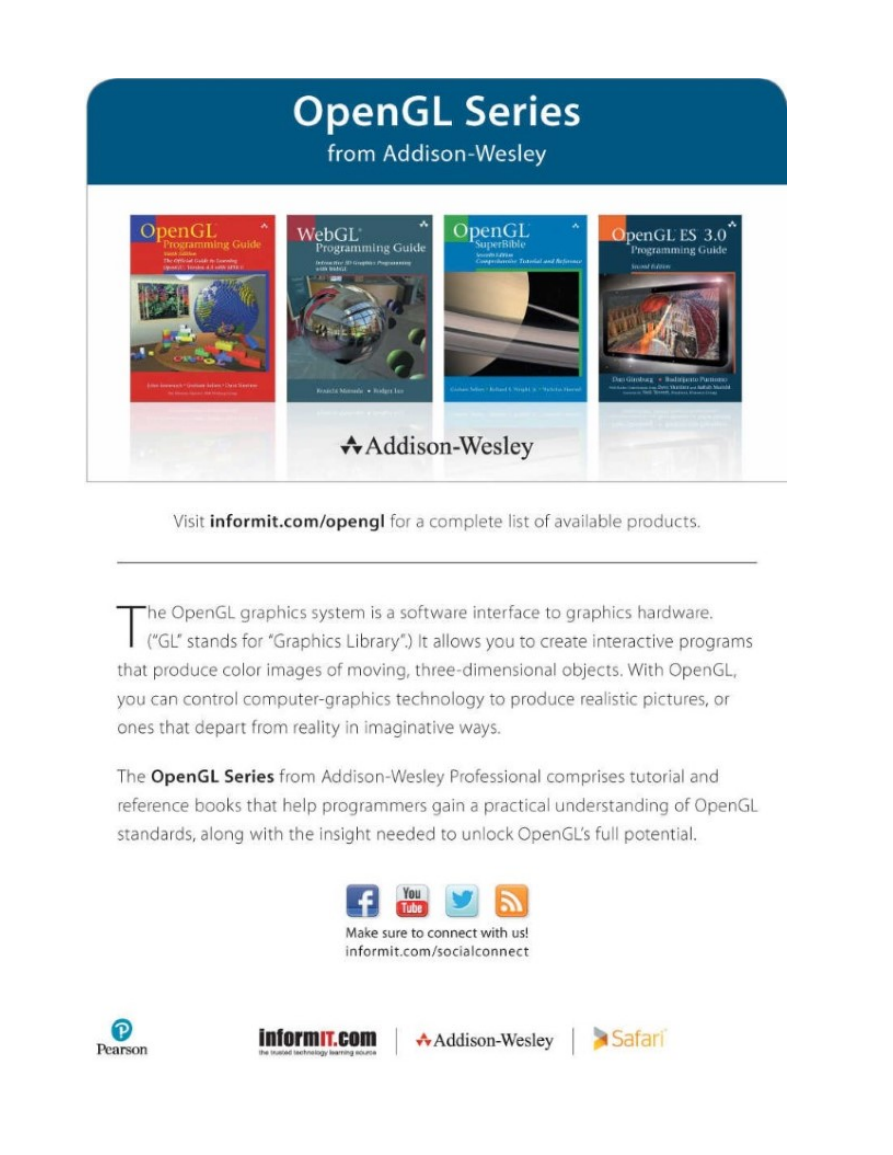

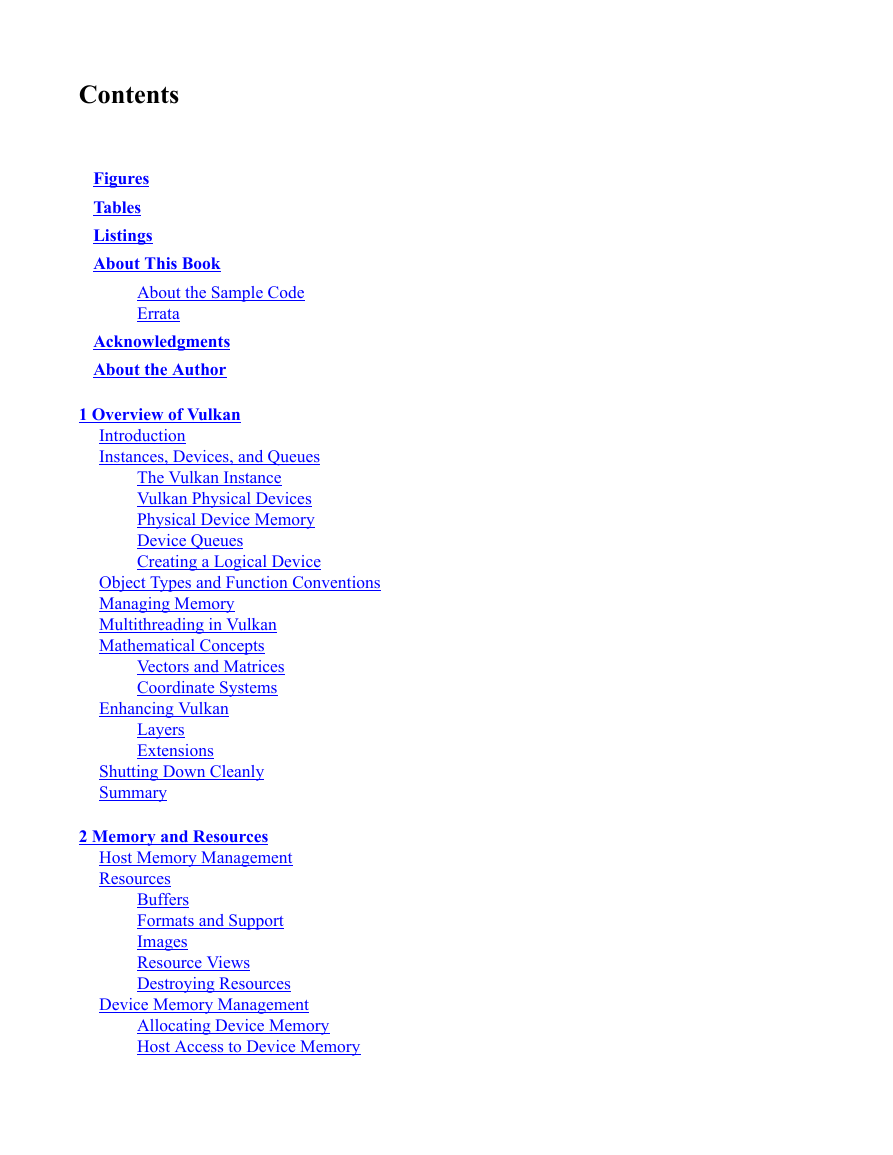
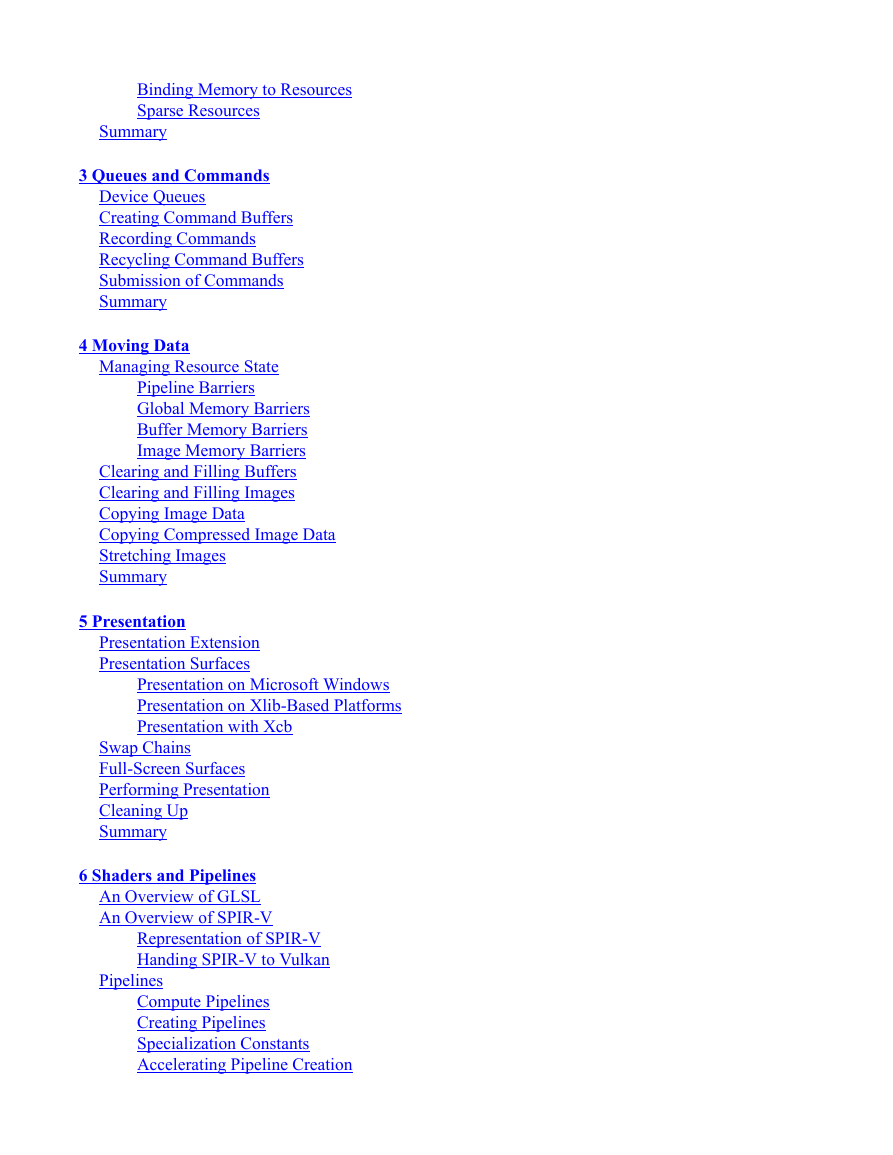








 2023年江西萍乡中考道德与法治真题及答案.doc
2023年江西萍乡中考道德与法治真题及答案.doc 2012年重庆南川中考生物真题及答案.doc
2012年重庆南川中考生物真题及答案.doc 2013年江西师范大学地理学综合及文艺理论基础考研真题.doc
2013年江西师范大学地理学综合及文艺理论基础考研真题.doc 2020年四川甘孜小升初语文真题及答案I卷.doc
2020年四川甘孜小升初语文真题及答案I卷.doc 2020年注册岩土工程师专业基础考试真题及答案.doc
2020年注册岩土工程师专业基础考试真题及答案.doc 2023-2024学年福建省厦门市九年级上学期数学月考试题及答案.doc
2023-2024学年福建省厦门市九年级上学期数学月考试题及答案.doc 2021-2022学年辽宁省沈阳市大东区九年级上学期语文期末试题及答案.doc
2021-2022学年辽宁省沈阳市大东区九年级上学期语文期末试题及答案.doc 2022-2023学年北京东城区初三第一学期物理期末试卷及答案.doc
2022-2023学年北京东城区初三第一学期物理期末试卷及答案.doc 2018上半年江西教师资格初中地理学科知识与教学能力真题及答案.doc
2018上半年江西教师资格初中地理学科知识与教学能力真题及答案.doc 2012年河北国家公务员申论考试真题及答案-省级.doc
2012年河北国家公务员申论考试真题及答案-省级.doc 2020-2021学年江苏省扬州市江都区邵樊片九年级上学期数学第一次质量检测试题及答案.doc
2020-2021学年江苏省扬州市江都区邵樊片九年级上学期数学第一次质量检测试题及答案.doc 2022下半年黑龙江教师资格证中学综合素质真题及答案.doc
2022下半年黑龙江教师资格证中学综合素质真题及答案.doc